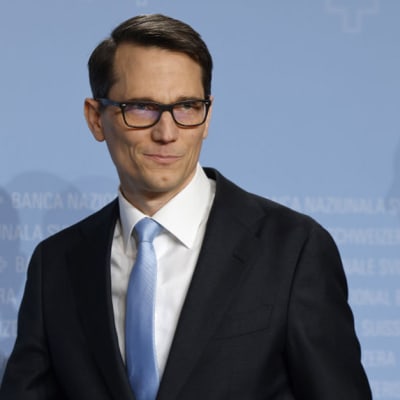Fixed Income Market overview
After a turbulent October, and through a month filled with political headlines, fixed income posted robust performance at an aggregate level in November. There was however marked differentiation between EUR and USD markets, with EUR markets outperforming in the government bond space but underperforming in credit as spreads moved wider toward month end. Sectoral trends were also driven by the US election result, with industrials and autos leading the tightening in the US at the expense of EUR counterparts, with EUR autos continuing to suffer after experiencing some reprieve in October.The US election headlined a busy macro month, with Donald Trump and the Republican party securing a "red sweep" across the presidency, house and senate. While Trump had the edge in betting markets heading into the vote, the scale of the Republican wave was quite unexpected. In the lead up to voting day, markets had moved to price towards this result with higher yields and rallying risk assets domestically, on the assumption of a mix of expansionary fiscal policy with disregard of fiscal deficits and increased trade tariffs. However, post-election, the selection of cabinet nominees who have voiced support for more fiscally prudent policies, particularly Scott Bessent Treasury Secretary, has been taken positively by markets, and saw rates move lower alongside continued strength in US risk assets. However, the news flow on trade tariffs remained volatile post-election in a reminder of the headline risk that came with Trump's first term. The use of trade tariff threats as a negotiation tactic will very much continue to be part of Trump presidency, and rhetoric since his victory has highlighted Mexico, Canada and China to be at threat, with concerns also spilling over into European risk assets. European assets additionally had their own bout of political headlines as German chancellor Scholz called a snap election for February. Whilst the ultimate outcome might bring some much-needed coherency to Germany's political front, it freezes any chance of policy advancement at a time when the economy continues to stumble as their fiscal business model is suffering. France also faced a fresh bout of political headwinds towards the end of the month, resulting in the government's resignation following a no-confidence vote due to the rejection of the proposed budget.Politics aside, macroeconomic developments also supported duration following the pre-election sell off, with the Fed delivering another 25bp cut after a soft labour market report (albeit weather and strike affected). Growth data also showed signs of weakening in the US after a post summer rebound, whilst inflation continued a short-term uptick but maintained a longer-term downtrend. If anything, the months events should act as a reminder that the future path of inflation will be driven by both fiscal developments as well as the longevity of underlying growth momentum. Eurozone economic data continued to come in weak but has perhaps showed signs of bottoming in its weakest areas.Geopolitical risk spiked higher in the Ukraine-Russia conflict, with Ukraine's use of US-supplied longer-range missiles to target Russian territory after receiving clearance from Washington. The use of western supplied missiles to hit Russian occupied territory has been touted as a red line by Putin, and as a response the Russian president signed a decree lowering the threshold to trigger use of the country's nuclear arsenal. Whilst this appears to be a deterrent rather than an imminent escalation threat, the events saw a spike in volatility, so headline risk from the conflict remains.With rates actually lower now than pre-election despite the perceived 'worst-case scenario' for rates of a 'red sweep' materializing, we continue to favor duration heavy assets. But without seeing an imminent risk to spreads, despite being at tight levels, we prefer to access duration via high quality credit to collect extra carry to compensate for flat/inverted rate curves. We maintain a neutral allocation to high yield but emphasise a continued focus on selecting quality, particularly in Europe which faces ongoing growth and refinancing risks.
Tod down activities
On November 15th, we have decided to adjust our Tactical Asset Allocation as follows:. Decrease of our exposure to EM Local Currency debt from 5.0% to 2.5%, moving from Neutral to underweight 2.5%.. Increase our exposure to Cash from 2.5% to 5%, moving from underweight 2.5% to Neutral.. Decrease our exposure to Government bonds from 30% to 28.75%, moving from Neutral to underweight 1.25%.. Increase of our exposure to Investment Grade Corporates from 38.75% to 40%, moving from overweight 3.75% to overweight 5%.The main reasons for these trades are as follow:. We expect the new US administration to conduct policies less supportive for EM local currencies, most notably with a tougher stance on the global trade front. For this reason, we prefer to reduce the risks associated to our exposure to this very volatile segment.. At the same time, the agenda of President elect Trump is likely to be growth supportive, while generating potential inflation pressures. In the context of a still robust US economy, the Fed is likely to continue to ease its monetary policy, but to end its rate cut cycle at levels above neutral, close to 4%. The higher than previously expected cash rate in an environment of greater uncertainty and volatility linked to the priorities of the new administration leads us to increase our exposure to cash back to neutral levels.. We cut last month our exposure to government bonds to increase our exposure to investment grade corporate bonds, to benefit from the attractive mix of duration and credit risk the latter offers in the current environment. We believe the election of President Trump reinforces the case, and take the additional step of increasing our overweight on investment grade from 3.75% to 5%.. While moving to underweight on government bonds, we maintain a corresponding overweight on inflation-linked bonds, which we expect to outperform nominal bonds in the context of high and attractive real yields and of rising inflationary risks as the new US administration steps into office.
Bottom up activites
Government pocket
In November the increased market volatility triggered by the US elections provided an opportunity to tactically buy USTs and close the position intra-month to capture a ~20bps move lower in yields. We maintained the curve steepening position in the Eurozone and stayed in the relative value trade: long 10-year UK sovereign bonds versus their German counterpart.
High Yield pocket
November was a quiet month in terms of portfolio activity. Indeed, we took profit on a recent new issue, namely United Group, a telecom company operating in southern Eastern Europe. The proceeds were reinvested in a new ? Tier 2 issue from the Spanish bank Abanca.
Investment Grade pocket
The new issue market remained very active in November and we remained very selective adding new issues where we see value and the company's fundamentals are sound. This generally meant we moved down the capital structure of solid investment grade companies adding the corporate hybird new issues from plant-based ingredients company Roquette Freres, infrastrucure company Abertis and oil major BP. We sold the corporate hybird from Heimstaden Bostad at close to par after it had rallied over 50 points in the last twelve months which reminds us of the strength of the real estate rally we have witnessed since Q4 2023.
Performance and characteristics
Since the beginning of the year:SAA: Strong positive contribution. All the segments are in positive territory on a year-to-date basis with Investment Grade corporate and Emerging markets hard currency being the segments with strongest positive performance.TAA: Slightly negative contribution. Our underweight to China local currency until April 2024 contributed slightly negatively. Our underweight to emerging markets hard currency and our overweight to developed governments (until October 2024) also contributed slightly negatively.Portfolio Construction (PC):Security selection: Strongly positive contribution.The issuer selection in the corporate Investment Grade, the High yield and Developed government pockets are the biggest contributors year to date while the emerging markets hard currency pocket contributed negatively. Within the corporate IG, we benefitted from our exposure to Real Estate, property and financials.Overlay: Strongly positive contribution.The strong positive contribution is essentially driven by tactical trades on bonds and active duration management.











